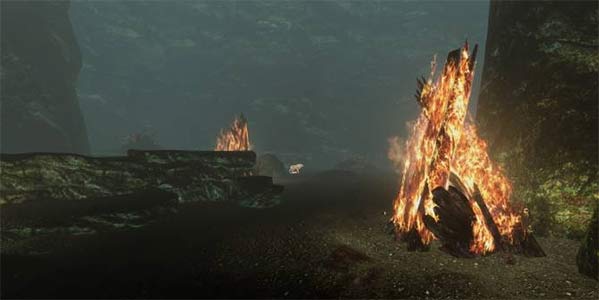In the previous post we looked at the Satisfaction Theory of the atonement. As we saw, this was developed by Anselm who drew heavily from the honour based culture of the middle ages in which he lived. Now we turn to look at a theory which does not seem have its focus in any cultural setting at all, and as such has a timeless, culture -free quality to it.
When I first heard about this theory I reacted in a strongly negative way. In my youthful ignorance it seemed faintly ridiculous. I flatter myself by thinking I have grown up since my mid 40s! Either way I am less black and white in my thinking , and a lot happier as a result…

Peter Abelard (1079-1142) was a French, medieval scholar, and was therefore more or less a contemporary of Anselm. He has been described as ‘the keenest thinker and boldest theologian of the 12th Century’ [1] though his ideas came under attack leading to his eventual excommunication just prior to his death.[2]
You might recall that these blogs on atonement are written after we have studied the subjects in our Life Group.[3] My over arching aim for L.G. is that we come to a more intimacy place with the divine trinity – a deeper experience of God’s love. So, given the nature of Abelard’s work I asked the group to split into pairs, and each pick one episode from the life of Jesus that they found inspiring; something he said or did, some interaction that impacted them. I said people could not pick the crucifixion, which wasn’t universally accepted (!) because in explaining it lifers were likely to bring their atonement theories to the fore, and I wanted to clear the decks of these. As you’d expect, this produced a rich conversation – excellent!
Here are the passages that were picked, with the briefest of reasons.
- The beatitudes – the ‘blessed are the…’ statements in Matthew 5. Jesus could hold a crowd, and speak deep theology, amazing the apparently uneducated and disenfranchised audience whilst challenging the power structures and bringing hope. (7:28). Simple amazing.
- Zacchaeus, a hated Jewish tax collector who had got rich exploiting his own people as he worked for the Roman oppressors. Jesus goes to his house for dinner, and so does salvation. The outcasts, the sinners, are welcome Luke 19:1-10
- Jesus brings a little child center stage, saying that we must become as little children to inherit the kingdom of God. Again, the standards of the existing culture are inverted, and a timeless pointer to mystical encounter with God’s Kingdom is taught. Mk 10:13-16
- Mat 8:5-13 Speaking to a Roman leader about his distant and gravely ill, daughter Jesus commands the girl to be well, and so it is. Faith can move a mountain.
- John 17 :20-21 Part of one of the long prayers of Jesus, in which he prays ‘forwards’ that Christians down through the centuries might be one. Every christian can know they have been personally prayed for.
- Luke 8 43-48 In the midst of a crowd and ‘unclean’ woman touches the hem of his garment, and power flows out from him and she is healed.
Very Inspiring. I thought we were looking at the Atonement?
We are.[4] Abelard did not go for atonement ideas that required God to show any sense of vengeance against humans or in which debt or payment for honour-damage was required. He therefore rejected Anselm’s satisfaction theory. Neither did he accept any form of ransom to the devil – arguing that these turned the satan into a rival of God, an idea that is simply ridiculous but alive and well today. Abelard reasoned that just because the devil tricked our ancient ancestors, it didn’t follow that either humanity or the earth was turned over to the satan’s jurisdiction and needed buying back.
Instead, he asked a profoundly simple, and very disturbing question. ‘What if’ he reasoned, ‘God could simply choose to forgive sin?’ After all, Jesus did it on many occasions before he was crucified, and you could argue that even the old testament, with all its animal sacrifice, hints at this in places too (though granted, it may not be as obvious).[5]
Let that sink in. It is a truly enormously, dangerous question. Well, at least for evangelicals and protestants… Why, asks Abelard, couldn’t God just forgive sin? I have sat with this question for some years now. Why do ideas of reparation and justice seem to trump love with God, whereas they don’t in normal life? Parenting makes you examine things. When a young child acts with defiance, do we demand a payment of some type from them to cancel that debt? What debt could a child owe to a parent anyway? Sure, we might punish our children (a screen-ban proved most effective in our house) to encourage better behaviour, or perhaps to pay for some damage done, but do we ever talk about a transaction so they can be forgiven? But I am getting ahead of myself, and there is more to Abelard.[6]
What was the point of the cross then?
There is one huge, blindingly obvious question for Abelard and my lifers asked it immediately. If God does just forgive sins then what was the point of the cross? I rather think that Abelard saw it in the context of the whole of Jesus life. So the question becomes, once again, Why did God become Man? Here’s what he said…
Now it seems to us that we have been justified by the blood of Christ and reconciled to God in this way: through this unique act of grace manifested to us – in that his Son has taken upon himself our nature and persevered therein in teaching us by word and example even unto death – he has more fully bound us to himself by love; with the result that our hearts should be enkindled by such a gift of divine grace, and true charity should not now shrink from enduring anything for him [7]
Once again we have the incarnation front and center. Through the ultimate act of grace, Jesus takes our nature so that he can live as an example to us – (ie it’s that last Adam concept again we saw with Irenaeus). Jesus whole life, including the cross, was aimed at ‘teaching us by word and example even unto death‘ and in the process binding us to him. The result of this is that our ‘hearts should be enkindled’, meaning ‘set on fire’, with love, admiration, inspiration and so forth, that we should not shrink from doing anything for him. In other words, the whole life of Jesus is so appealing to the disciple that they want to repent and more fully pursue Jesus. This is an experiential, mystical, repeating gospel.
But why the cross? We are so programmed to think of the cross as a transaction – I sin, Jesus paid, or some such. Leaving that to one side is not easy (and maybe not right?) Perhaps in laying down his life, Jesus was demonstratin what the ultimate act of loving, self-denial looks like? Perhaps it was what was needed to help the countless Christians down the ages who would meet a similar end as Yahwehistic monotheism became established, and again as it falls away? Clearly there was a prophetic element to it. Crucifixion was what happened to rebels in those days.
I Want to be Enkindled

‘Did not our hearts burn within us?’ asked the two confused disciples as after they had walked with Jesus on the road to Emmaus? (Lk 24:13ff) It was interesting to see the the ‘enkindling’ effect of sharing some examples from Jesus life that inspired us in life group. The same happened when we read though large chunks of Marks gospel last year. Surely this is what Abelard was driving at with his ‘moral influence’ theories? Abelard is placing the motif of ‘lover and beloved’ to the fore, which are clearly front and center in the Old Testament in Isaiah, Psalms and Song of Songs, all over the New, and perhaps most beatifically retold in the Prodigal Son.
I don’t think really any disciple could argue with this ‘influence’ part of Abelard’s teaching. However, the ‘What if God just forgave sin?’ idea; that’s more challenging. I am still working it through – to my mind it has a lot going for it, but then what do you do with 40 years of ‘he died to take my sin’ teaching? It seems to me its a bit like getting on a train, once you are on it, the destination is sure. In such circumstances its always good to reach for an inspiring theologian, and who better than C S Lewis, in this case from his ‘Last Battle.’
Aslan is winding up creation and causes a door made of sticks to be set up by which he stands. Every living creature, a vast multitude, comes running towards that door and in so doing gazes upon the face of Aslan. Those creatures that look on the face of Aslan with love go through the door into the New Narnia. Those who don’t look on him with love, go off to the side. “I do not know what happened to them’ writes Lewis. [8]
References, notes and so on
- Wikipedai, https://en.wikipedia.org/wiki/Peter_Abelard#cite_ref-CBD_3-0 , accessed October 2019
- Wikipedia, https://en.wikipedia.org/wiki/Moral_influence_theory_of_atonement, accessed October 2019
- Life Group consists of 6-12 people who meet regularly to discuss theology, pray together and hang out. LG goes by many names.
- Green, Joel B, Baker, Mark D, Recovering the scandal of the cross: Atonement in New Testament and Contemporary Contexts, (CITY, IVP, 2011) p136ff
- Luke 19:1-9; John 8:1-11; Luke 7:36ff; Matt 9:2; Mark 5:2; Mark 4:10ff quoting Isaiah . The point being that Jesus forgave people before the cross, and without the cross.
- I will certainly return to more ideas about this is a later post when we get onto penal theories of the cross.
- Peter Abelard, Exposition to the Romans, quote in Scandal, p137.
- I can’t find my copy!!!!!! So this is from memory for now.



